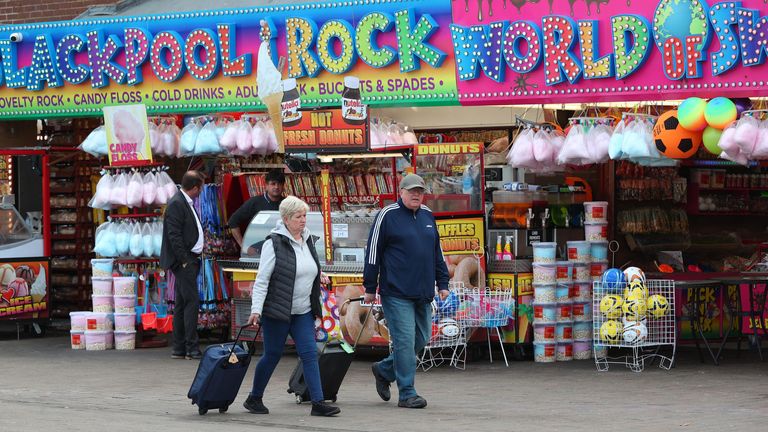The recovery of British high streets in the wake of the pandemic is faltering, according to new data, with tourist hubs the worst hit.
Research shows that the bounce back of high streets slowed in June as footfall dropped across the UK, according to think tank Centre for Cities, with weekend visitors to destinations such as Brighton, York, and Edinburgh collapsing.
But it was seaside and tourist destinations such as Blackpool and Bournemouth that saw the sharpest drops in visitor numbers between the end of May and end of June, with visitors to the two destinations falling by almost half.
Of 63 city and town centres studied by the think tank, weekly footfall numbers fell in all but one location.
One of the wettest months of May ever recorded in the UK, the weather may have put a dampener on the easing of lockdown restrictions and hurting high street footfall.
AdvertisementNight-time visitors to city and town centres also fell by 6% between the last weekend of May and last weekend of June, dealing pubs, bars and restaurants a financial blow.
More broadly, it continues to be small and medium city and town centres that are seeing the strongest recovery since restrictions were lifted, Centre for Cities said.
More from Business More job vacancies now than before pandemic as unemployment rate falls slightly, ONS figures show Two drug companies fined £260m for swindling NHS over ‘life-saving medicines’ COVID-19: Test and trace pings could shut down factories, government warned Boris Johnson says he is not keen on placing ‘extra taxes on hard working people’ amid calls for new salt and sugar tax Revolut becomes £24bn tech giant as digital bank strikes SoftBank and Tiger deal Streaming inquiry: Current music royalties model needs ‘complete reset’, report concludesBigger cities, meanwhile, continue to lag behind. Southend, Blackpool and Basildon have come back strongest, for example, with footfall nearly matching pre-pandemic levels, but London and other large city centres have fallen a long way behind – footfall in the centre of the capital was at just under a third of February 2020 levels.
“Much discussion in the lead up to restrictions being lifted was about the amount of pent up demand that lockdowns had created, and the likely splurge in spending as a result,” said Centre for Cities’ chief executive Andrew Carter. “But while there was an initial jump, the data suggests this may have faltered.”
“The weather and growing COVID-19 cases may be reasons for this, but with the end of the furlough scheme is in sight, high street businesses and workers will be hoping that the removal of restrictions on 19th July will help to sustain the high street’s recovery and bring more people back to the centre of our cities.”